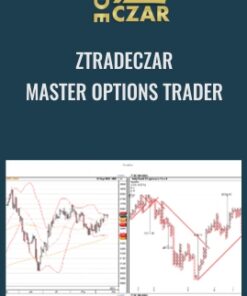Mass Violence: Risk Identification and Intervention Strategies for Potentially Violent Clients and Effective Treatment Techniques for Survivors – Kathryn Seifert
Question and Answer
What is mental health professionals?
mental health professionals is A must-watch for working in an era of pervasive violence, this critical recording will explore the connection between mental health issues and violence, analyze research and research limitations surrounding its study, and contemplate the role of clinicians in both the prevention and aftermath of mass violence..
How does mental health professionals must-?
A must-watch for mental health professionals working in an era of pervasive violence, this critical recording will explore the connection between mental health issues and violence, analyze research and research limitations surrounding its study, and contemplate the role of clinicians in both the prevention and aftermath of mass violence.
What is Mass Violence:?
Mass Violence: is Purchase Risk Identification and Intervention Strategies for Potentially Violent Clients and Effective Treatment Techniques for Survivors - Kathryn Seifert courses at here with PRICE $199.99 $84 Following acts of mass violence clinicians are often left feeling powerless, anxious and looking for answers..
How does Mass Violence: Purchase?
Purchase Mass Violence: Risk Identification and Intervention Strategies for Potentially Violent Clients and Effective Treatment Techniques for Survivors - Kathryn Seifert courses at here with PRICE $199.99 $84 Following acts of mass violence clinicians are often left feeling powerless, anxious and looking for answers.
What is I?
I is Can identify the warning signs and Intervene with those at-risk of committing violent acts?.
How does I Can?
Can I identify the warning signs and Intervene with those at-risk of committing violent acts?
What is I?
I is What can do to help survivors facing the devastating scars of trauma, anxiety, panic depression and grief left behind by unspeakable violence?.
How does I can?
What can I do to help survivors facing the devastating scars of trauma, anxiety, panic depression and grief left behind by unspeakable violence?
What is mental health professionals?
mental health professionals is A must-watch for working in an era of pervasive violence, this critical recording will explore the connection between mental health issues and violence, analyze research and research limitations surrounding its study, and contemplate the role of clinicians in both the prevention and aftermath of mass violence..
How does mental health professionals must-?
A must-watch for mental health professionals working in an era of pervasive violence, this critical recording will explore the connection between mental health issues and violence, analyze research and research limitations surrounding its study, and contemplate the role of clinicians in both the prevention and aftermath of mass violence.
What is this seminar?
this seminar is Better still, will go beyond the research and give you detailed clinical guidance on working with a variety of populations and ages, including children, adolescents, parents and community members who may walk into your office as a person at-risk of committing a violent act or as a survivor of one..
How does this seminar will go?
Better still, this seminar will go beyond the research and give you detailed clinical guidance on working with a variety of populations and ages, including children, adolescents, parents and community members who may walk into your office as a person at-risk of committing a violent act or as a survivor of one.
What is YOU?
YOU is CAN’T AFFORD TO BE UNPREPARED.
How does YOU CAN’T AFFORD?
YOU CAN’T AFFORD TO BE UNPREPARED
What is the risk factors,?
the risk factors, is Buy today and feel ready and able to identify effectively intervene with clients at-risk of performing violent acts, and provide hope and healing to those whose lives have been engulfed by mass violence..
How does the risk factors, Buy?
Buy today and feel ready and able to identify the risk factors, effectively intervene with clients at-risk of performing violent acts, and provide hope and healing to those whose lives have been engulfed by mass violence.
What is key contributing factors?
key contributing factors is Distinguish to the development of Complex PTSD as it relates to client case conceptualization..
How does key contributing factors Distinguish?
Distinguish key contributing factors to the development of Complex PTSD as it relates to client case conceptualization.
What is Complex PTSD?
Complex PTSD is Explore how impacts the cognitive, emotional, and physical health of the client..
How does Complex PTSD Explore?
Explore how Complex PTSD impacts the cognitive, emotional, and physical health of the client.
What is clients?
clients is Determine how to assess for Complex PTSD symptoms within other diagnoses, including personality disorders, mood disorders, anxiety disorders, and dissociative disorders..
How does clients Determine?
Determine how to assess clients for Complex PTSD symptoms within other diagnoses, including personality disorders, mood disorders, anxiety disorders, and dissociative disorders.
What is clinical treatment practical mind-body therapy tools?
clinical treatment practical mind-body therapy tools is Incorporate into to help clients feel resourced and prepared for trauma processing..
How does clinical treatment practical mind-body therapy tools Incorporate?
Incorporate into clinical treatment practical mind-body therapy tools to help clients feel resourced and prepared for trauma processing.
What is the six stages of trauma responses?
the six stages of trauma responses is Articulate within the neurobiology of Complex PTSD as it relates to clinical treatment..
How does the six stages of trauma responses Articulate?
Articulate the six stages of trauma responses within the neurobiology of Complex PTSD as it relates to clinical treatment.
What is assessment tools?
assessment tools is Utilize to properly assess for Complex PTSD to better inform treatment planning..
How does assessment tools Utilize?
Utilize assessment tools to properly assess for Complex PTSD to better inform treatment planning.
What is Breakdown?
Breakdown is how mutual regulation within the therapeutic relationship teaches clients self-regulation strategies that help them develop new interpersonal strengths that help with the treatment process..
How does Breakdown teaches?
Breakdown how mutual regulation within the therapeutic relationship teaches clients self-regulation strategies that help them develop new interpersonal strengths that help with the treatment process.
What is interventions?
interventions is Integrate for the treatment of Complex PTSD drawn from CBT, DBT, EMDR Therapy, Parts Work Therapy, Somatic Psychology, and mind-body therapies..
How does interventions Integrate?
Integrate interventions for the treatment of Complex PTSD drawn from CBT, DBT, EMDR Therapy, Parts Work Therapy, Somatic Psychology, and mind-body therapies.
What is the “Window of Tolerance”?
the “Window of Tolerance” is Recognize how working within can help reduce the likelihood of re-traumatization..
How does the “Window of Tolerance” Recognize?
Recognize how working within the “Window of Tolerance” can help reduce the likelihood of re-traumatization.
What is “top-down” and “bottom-up” interventions?
“top-down” and “bottom-up” interventions is Describe how can speed up or slow down the pacing of trauma treatment..
How does “top-down” and “bottom-up” interventions Describe?
Describe how “top-down” and “bottom-up” interventions can speed up or slow down the pacing of trauma treatment.
What is Employ?
Employ is the 6 Pillars of Resilience as a strength-based approach that fosters growth and integration of a positive sense of self-identity in clients..
How does Employ fosters growth?
Employ the 6 Pillars of Resilience as a strength-based approach that fosters growth and integration of a positive sense of self-identity in clients.
What is self-care?
self-care is Identify practices for therapists to help with self-care before, during, and after sessions when dealing with trauma to improve therapeutic alliance and prevent burnout..
How does self-care Identify?
Identify self-care practices for therapists to help with self-care before, during, and after sessions when dealing with trauma to improve therapeutic alliance and prevent burnout.
What is Mass Violence:?
Mass Violence: is Get Risk Identification and Intervention Strategies for Potentially Violent Clients and Effective Treatment Techniques for Survivors of author Kathryn Seifert only price 79$ Post-Traumatic Stress Disorder vs..
How does Mass Violence: Get?
Get Mass Violence: Risk Identification and Intervention Strategies for Potentially Violent Clients and Effective Treatment Techniques for Survivors of author Kathryn Seifert only price 79$ Post-Traumatic Stress Disorder vs.
What is Complex PTSD:?
Complex PTSD: is Understand the Difference Acute traumatic stress, PTSD, Complex PTSD Diagnostic clarification and differential diagnosis Key contributing factors of Complex PTSD The common symptoms of Complex PTSD The Neurobiology of PTSD: Beyond Fight and Flight Polyvagal Theory 6 Stages of trauma response Heart Rate Variability and the Social Nervous System Interpersonal Neurobiology Psychobiological regulation Rupture and repair Implications of childhood neglect or abuse Neuroplasticity and Complex PTSD Psychological and Physiological Repercussions of Complex PTSD: A Deeper Understanding for Accurate Assessment Intrusive symptoms and anxiety Emotional dysregulation: Outbursts of anger and debilitating shame Avoidance symptoms and phobic reactions to traumatic material Interpersonal problems and difficulty being close to others Dissociation and dysregulation Cognitive distortions and compromised meaning making Physical health problems, ACE factors and painful somatization Preverbal and nonverbal memories Disturbing somatic sensations Depressive symptoms Learned helplessness and shame Therapeutic Interventions for Complex PTSD: Summary of Effective Therapies Psychodynamic and Relational Therapy Psychobiological perspectives: Polyvagal Theory Cognitive Behavioral Therapy (CBT) Dialectical Behavioral Therapy (DBT) EMDR Therapy Somatic Psychology Parts Work Therapy: Work with Ego States Complementary and Alternative Medicine (CAM): mindfulness, yoga, and integrative healthcare Integrative Treatment for Complex PTSD: Putting it All Together for an Effective Treatment Plan A biopsychosocial approach: Partner with clients to build a health care team Goal of treatment: Memory retrieval vs..
How does Complex PTSD: Understand?
Complex PTSD: Understand the Difference Acute traumatic stress, PTSD, Complex PTSD Diagnostic clarification and differential diagnosis Key contributing factors of Complex PTSD The common symptoms of Complex PTSD The Neurobiology of PTSD: Beyond Fight and Flight Polyvagal Theory 6 Stages of trauma response Heart Rate Variability and the Social Nervous System Interpersonal Neurobiology Psychobiological regulation Rupture and repair Implications of childhood neglect or abuse Neuroplasticity and Complex PTSD Psychological and Physiological Repercussions of Complex PTSD: A Deeper Understanding for Accurate Assessment Intrusive symptoms and anxiety Emotional dysregulation: Outbursts of anger and debilitating shame Avoidance symptoms and phobic reactions to traumatic material Interpersonal problems and difficulty being close to others Dissociation and dysregulation Cognitive distortions and compromised meaning making Physical health problems, ACE factors and painful somatization Preverbal and nonverbal memories Disturbing somatic sensations Depressive symptoms Learned helplessness and shame Therapeutic Interventions for Complex PTSD: Summary of Effective Therapies Psychodynamic and Relational Therapy Psychobiological perspectives: Polyvagal Theory Cognitive Behavioral Therapy (CBT) Dialectical Behavioral Therapy (DBT) EMDR Therapy Somatic Psychology Parts Work Therapy: Work with Ego States Complementary and Alternative Medicine (CAM): mindfulness, yoga, and integrative healthcare Integrative Treatment for Complex PTSD: Putting it All Together for an Effective Treatment Plan A biopsychosocial approach: Partner with clients to build a health care team Goal of treatment: Memory retrieval vs.
What is trauma recovery History?
trauma recovery History is taking: Identify chronic, repeated, and/or developmental trauma events Cultural factors and Complex PTSD Recognize attachment Injuries How to work with transgenerational trauma Identify parts, ego states and defenses Assess for dissociation Mutual regulation and relational repair in therapy Prepare for trauma processing: Develop resources and stability Work through traumatic memories: EMDR and Somatic Psychology Grief work in Complex PTSD Integrate and Instill positive change Experiential Interventions: Mind-Body Practices for Clients with Complex PTSD Conscious breathing for self-regulation Grounding and sensory awareness Containment: Reclaim choice and control Build imaginal allies Cultivate mindfulness, acceptance, and self-compassion Somatic interventions: Titration, sequencing, and somatic re-patterning Bilateral stimulation and dual attention in EMDR Therapy Potential risks and limitations of mind-body therapies Fostering Resilience: For Post-Traumatic Growth and Healing Learn the 6 Pillars of Resilience Trauma recovery and the bell curve Resilience as a process and an outcome Help clients move from learned helplessness to learned optimism Post-Traumatic Growth: Help clients reach their potential Vicarious Trauma: Improve Client Outcomes Through Effective Self-Care Identify resources that improve your clinical skills In-session self-care to improve focus on the client and therapeutic process Burnout prevention techniques Get Mass Violence: Risk Identification and Intervention Strategies for Potentially Violent Clients and Effective Treatment Techniques for Survivors of author Kathryn Seifert only price 79$ Tag: Mass Violence: Risk Identification and Intervention Strategies for Potentially Violent Clients and Effective Treatment Techniques for Survivors - Kathryn Seifert Review..
How does trauma recovery History taking:?
trauma recovery History taking: Identify chronic, repeated, and/or developmental trauma events Cultural factors and Complex PTSD Recognize attachment Injuries How to work with transgenerational trauma Identify parts, ego states and defenses Assess for dissociation Mutual regulation and relational repair in therapy Prepare for trauma processing: Develop resources and stability Work through traumatic memories: EMDR and Somatic Psychology Grief work in Complex PTSD Integrate and Instill positive change Experiential Interventions: Mind-Body Practices for Clients with Complex PTSD Conscious breathing for self-regulation Grounding and sensory awareness Containment: Reclaim choice and control Build imaginal allies Cultivate mindfulness, acceptance, and self-compassion Somatic interventions: Titration, sequencing, and somatic re-patterning Bilateral stimulation and dual attention in EMDR Therapy Potential risks and limitations of mind-body therapies Fostering Resilience: For Post-Traumatic Growth and Healing Learn the 6 Pillars of Resilience Trauma recovery and the bell curve Resilience as a process and an outcome Help clients move from learned helplessness to learned optimism Post-Traumatic Growth: Help clients reach their potential Vicarious Trauma: Improve Client Outcomes Through Effective Self-Care Identify resources that improve your clinical skills In-session self-care to improve focus on the client and therapeutic process Burnout prevention techniques Get Mass Violence: Risk Identification and Intervention Strategies for Potentially Violent Clients and Effective Treatment Techniques for Survivors of author Kathryn Seifert only price 79$ Tag: Mass Violence: Risk Identification and Intervention Strategies for Potentially Violent Clients and Effective Treatment Techniques for Survivors - Kathryn Seifert Review.
What is Mass Violence:?
Mass Violence: is Risk Identification and Intervention Strategies for Potentially Violent Clients and Effective Treatment Techniques for Survivors - Kathryn Seifert download..
How does Mass Violence: Risk?
Mass Violence: Risk Identification and Intervention Strategies for Potentially Violent Clients and Effective Treatment Techniques for Survivors - Kathryn Seifert download.
What is Mass Violence:?
Mass Violence: is Risk Identification and Intervention Strategies for Potentially Violent Clients and Effective Treatment Techniques for Survivors - Kathryn Seifert discount..
How does Mass Violence: Risk?
Mass Violence: Risk Identification and Intervention Strategies for Potentially Violent Clients and Effective Treatment Techniques for Survivors - Kathryn Seifert discount.
What is Mass Violence:?
Mass Violence: is Purchase Risk Identification and Intervention Strategies for Potentially Violent Clients and Effective Treatment Techniques for Survivors - Kathryn Seifert courses at here with PRICE $199.99 $84.
How does Mass Violence: Purchase?
Purchase Mass Violence: Risk Identification and Intervention Strategies for Potentially Violent Clients and Effective Treatment Techniques for Survivors - Kathryn Seifert courses at here with PRICE $199.99 $84
 10x Wealth and Business New – Brendon Burchard
1 × $123.00
10x Wealth and Business New – Brendon Burchard
1 × $123.00 Qi Medicine - Dr. Roger Jahnke, OMD
1 × $92.00
Qi Medicine - Dr. Roger Jahnke, OMD
1 × $92.00 Advanced Seminar - Market Geometry
1 × $95.00
Advanced Seminar - Market Geometry
1 × $95.00 16 Seminar Home Study Course – Lawrence G. McMillan
1 × $60.00
16 Seminar Home Study Course – Lawrence G. McMillan
1 × $60.00 Managing Bedside Emergencies Online Course - Pam Collins & Cyndi Zarbano
1 × $85.00
Managing Bedside Emergencies Online Course - Pam Collins & Cyndi Zarbano
1 × $85.00 “Done-For-You” Client-Attraction Teleseminar Package – Michelle Schubnel
1 × $80.00
“Done-For-You” Client-Attraction Teleseminar Package – Michelle Schubnel
1 × $80.00 60 Minute Enrollment Method - Kate McShea
1 × $152.00
60 Minute Enrollment Method - Kate McShea
1 × $152.00 “Email Response Warrior + Email Inbox Warrior” – Jason Henderson
1 × $78.00
“Email Response Warrior + Email Inbox Warrior” – Jason Henderson
1 × $78.00 10,000 Royalty Free Photos - Alun Hill
1 × $195.00
10,000 Royalty Free Photos - Alun Hill
1 × $195.00 2-Day Certificate Course: Treating Trauma in Intimate Relationships - Healing the Trauma Legacy in Couples Therapy - Janina Fisher
1 × $124.00
2-Day Certificate Course: Treating Trauma in Intimate Relationships - Healing the Trauma Legacy in Couples Therapy - Janina Fisher
1 × $124.00 10 Brain-Based Strategies: Help Children Overcome Anxiety and Promote Resilience - Tina Payne Bryson
1 × $29.00
10 Brain-Based Strategies: Help Children Overcome Anxiety and Promote Resilience - Tina Payne Bryson
1 × $29.00 Bill Twyford and Dwan Twyford - Short Sales Apprenticeship Program
1 × $89.00
Bill Twyford and Dwan Twyford - Short Sales Apprenticeship Program
1 × $89.00 Battlefield Kali Sword - JKD Unlimited
1 × $49.00
Battlefield Kali Sword - JKD Unlimited
1 × $49.00 1-2-3 Magic: 3-Step Discipline for Calm, Effective and Happy Parenting - Thomas W. Phelan
1 × $84.00
1-2-3 Magic: 3-Step Discipline for Calm, Effective and Happy Parenting - Thomas W. Phelan
1 × $84.00 101: Access Your Psych Capital - The ReThink Group
1 × $90.00
101: Access Your Psych Capital - The ReThink Group
1 × $90.00 Legal Risks for Nurses: Protect Yourself from the Courtroom! - Rachel Cartwright-Vanzant
1 × $44.00
Legal Risks for Nurses: Protect Yourself from the Courtroom! - Rachel Cartwright-Vanzant
1 × $44.00 Addressing Patient Behavior by Brain Lesion Site: Clinical Tools and Strategies Specific to Patient Deficits - Jerome Quellier
1 × $85.00
Addressing Patient Behavior by Brain Lesion Site: Clinical Tools and Strategies Specific to Patient Deficits - Jerome Quellier
1 × $85.00 ZTradeCZAR Master Options Trader - Ztradeczar
1 × $117.00
ZTradeCZAR Master Options Trader - Ztradeczar
1 × $117.00 4-15 Super Saturday - Chris Reiff
1 × $60.00
4-15 Super Saturday - Chris Reiff
1 × $60.00 10 Steps to Learn Anything Quickly – John Sonmez
1 × $30.00
10 Steps to Learn Anything Quickly – John Sonmez
1 × $30.00 14-Day Options Trading Bootcamp (Jule 2014) – Sang Lucci
14-Day Options Trading Bootcamp (Jule 2014) – Sang Lucci